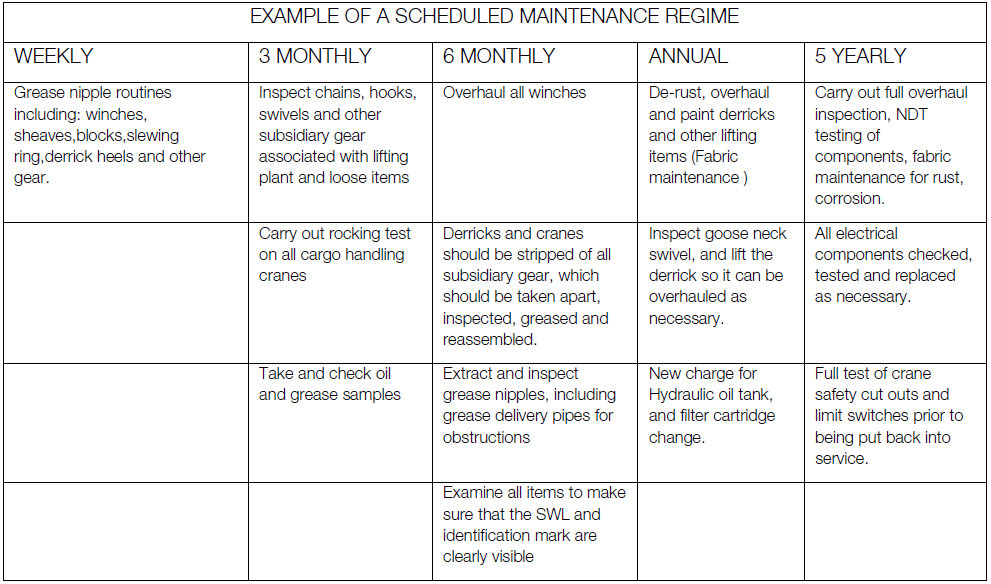Evidence in Crane Damage Disputes
Disputes over damage to vessels’ cranes during cargo operations regularly arise. Invariably, the shipowner will blame rough handling by stevedores who in turn will allege the crane was defective or not properly maintained.
Determining who is responsible for damages caused to ship’s equipment can be difficult to prove. It will usually hinge on who has maintained the most detailed evidence.
Cranes and Charterparties
There is usually a provision within a charterparty that obliges the vessel owner to ensure that the cranes are fully functional and fit to use and are made available to stevedores as required. Should the cargo handling equipment not be available or they breakdown during use, then the vessel will usually be placed off-hire for the time lost. However, if the damage is caused as a result of a stevedore’s action then the vessel will remain on-hire.
The value of evidence
The costs associated with the damage to cranes, delays in discharge or loss of hire can be significant. It is essential that detailed evidence is collected in order to protect your position. A number of crane damage claims have failed as a result of a lack of evidence.
London Arbitration 15/13 contains a good example of a claim failing due to a lack of evidence, an extract of which is included below:
“The claimant claimed US$10,000 in respect of replacing the damaged hoisting wire…It submitted that …the stevedores had agreed to the statement “All cargo gear is in good working order… and …fully functional”….the issue was whether the claimant had proved on a balance of probabilities that the damage occurred as a result of “rough handling” of the equipment by the stevedores….There was no direct evidence in the form of witness statements or otherwise as to the way in which the stevedores carried out any inspection of the equipment or the discharge operation, and the stevedores had denied that there was any mishandling on their part. No metallurgical evidence had been presented which would help to identify the cause of the failure on any scientific basis…Accordingly the Claimant’s claim to recover the cost of replacing the wire failed.”
As in this case, having the stevedores certify the condition of the equipment may not assist in resolving a dispute as this will not disprove pre-existing damage or a latent defect which could not be detected by a visual inspection.
Gathering the best evidence
To demonstrate that cranes are well-maintained and fully operational, detailed records should be preserved. These records should confirm that there is a comprehensive inspection and planned maintenance programme in place, that all equipment is certified and in good condition and that any defects are identified and promptly repaired.
As required under the ILO Convention 152, a “Register of Lifting Appliance and Register of Cargo Gear” should be maintained onboard. This Register should include:
- details of the lifting equipment;
- test certificates;
- details of thorough examinations and regular inspections carried out;
- details of maintenance schedules, overhauls, wire changes; and
- any other pertinent information relating to the equipment.
The planned maintenance programme should incorporate the manufacturer’s requirements for periodic checks and maintenance of the equipment. An example of a planned maintenance schedule for lifting equipment is included in the table below:

Check it and record it
All equipment should be inspected before, during and after use. This ensures that all parts of the equipment are properly lubricated, free from damage and that all limit switches and safety devices are fully operational. All inspections and maintenance carried out should be documented. It may also be beneficial to keep a photographic record.
A watchful eye
It is important that the stevedores’ operation of the cranes is observed throughout cargo operations. If the cranes are being improperly handled it is essential that any concerns are raised at the time. If necessary, raise a formal letter of protest.
Photographs or video footage of crane operations will greatly assist in determining the cause of any damages that may arise. As was identified in the London Arbitration decision referred to earlier, witness statements will form a critical part of any evidence collection.
In summary
In the event of a crane breakdown, a common scenario is the owner alleging stevedore mishandling and the charterer alleging defective or poorly maintained equipment.
The success of any crane damage dispute will ultimately depend upon the quality of evidence collected in support of the claim.
For more information contact our loss prevention team or visit here.
Author: Simon MacLeod
Deputy Director (Loss Prevention)

 , you have now set your site language to English. If you'd like to change your language preference again, simply click on one of the other flags.
, you have now set your site language to English. If you'd like to change your language preference again, simply click on one of the other flags. を選択して頂くと、言語設定が日本語に切り替わります。設定変更後は以下の機能が利用可能です。
を選択して頂くと、言語設定が日本語に切り替わります。設定変更後は以下の機能が利用可能です。
 ,可将网站语言设置为中文。这能帮助您:
,可将网站语言设置为中文。这能帮助您:

